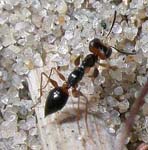This help page is for advanced site editors only.
To change settings for the species account output, including the header text on the first page, visit Site configuration > Species account gallery on the menu. This brings up the configuration page for the gallery with several advanced setting further down the page (please check with John before changing anything you are not sure about). However, at the top of the settings there is a Header text box into which you can place any content you require to appear at the top of the gallery's first page. Click… Read more


